It wasn’t a cartographer who originally put Connecticut on the map; it was an Italian. More specifically, it was a Neapolitan.
I’ve long struggled with my identity as a native of Connecticut. We are called “Nutmeggers,” presumably because the phrases “Connecticutites” and “Connecitutters” just don’t quite have the same roll-off-the-tongue ring as, say, “Californian,” or the exoticism of “Floridian.” We were robbed of our single professional sports team back when I was just a kid (that’d be the Hartford Whalers—or, The Whale, if you’re a true hockey fan), so we’re forced to glom on to neighboring states with major metros; if you live in the northern half of Connecticut, it’s Patriots/Bruins/Red Sox, while the southern half pledges allegiance to New York and New Jersey teams. And as much as I try to impress the importance of being the state that plays home to the Wiffle Ball factory, it is a fact that never seems to quite elicit the exuberance I expect.
Alas, in our adorably quaint southern New England province, we have precious little to call our own. And I get it. I’ve accepted it all. Well, almost all, anyway. There is one thing that I insist we Connecticut folk get credit for, and that is undeniably perfect pizza.
In addition to the Yankees and the Knicks, pizza is widely accepted as a New York specialty. New York-style pizza spots dot the boulevards and avenues of American cities looking to capitalize on the notoriety of the city’s slices. And as someone who has, for many years, lived in (and deeply loved) New York City, for me New Haven takes the cake when it comes to pizza pie.
In my many travels over the years, it’s been a perplexing assertion for most people to digest. “Don’t you mean New York pizza?” they ask me. And I do not. Don’t get me wrong, I love me some New York pizza. Those $2.50-a-slice corner shops have saved me many a time when I was broke, a little buzzed, or, in my younger days—a lot hungover. They’ve been lunches and late nights and date nights and soul-satisfying meals in many scenarios. But I tell you this—they’re no New Haven pizza.
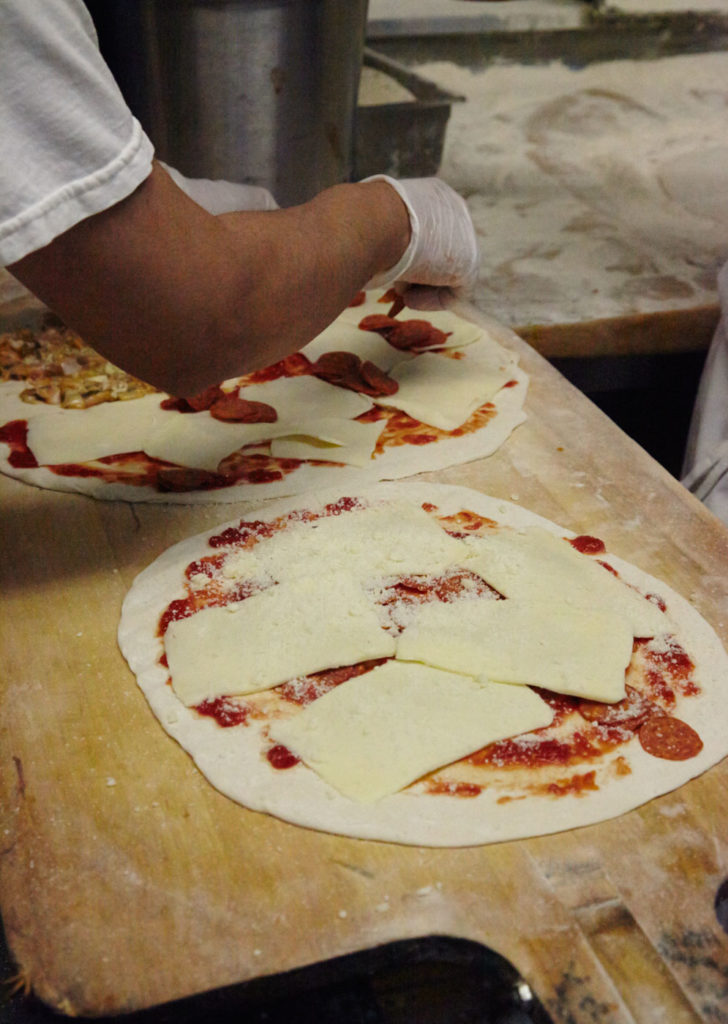
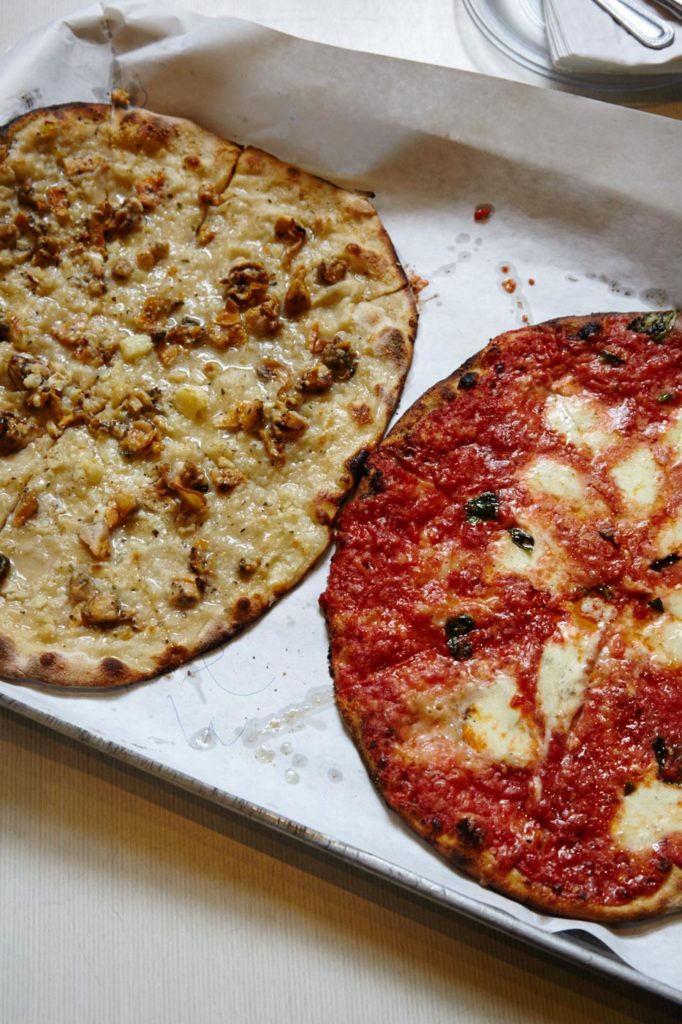
Most of these people will probably never know what I mean; I understand that rarely will folks make a pilgrimage to a small, coastal Connecticut town. But I will continue to instruct them anyway. The next time you’re in New York, if time allows on your Big Apple exploration and you can find the self control to bypass the myriad corners spots slinging their own style of NY pie, here’s what I suggest: make your way to Grand Central Station. Pay the round trip fare and enjoy the scenic ride to the end of the Metro North New Haven line. Abdicate your red pleather train seat at the final stop where you’ll be deposited into a storied Connecticut city famous for its Ivy League association. Well, that, and The Gilmore Girls.
But most importantly, upon arriving in the city of New Haven, find your way to an enclave long-dedicated, more or less, to a singular product: apizza. And no, that’s not a typo. “Apizza” is simply the way a Neapolitan (in the local dialect, pronounced “nApOlitTON”) says “pizza.” It is alleged that the pizza we know and love today was born in Naples, the capital of Italy’s Campania region—and this was a stateside sanctuary for those early emigrating pizzaiolos who sought to bring a slice of home to their new surroundings. While the nearby neighborhoods, home to Yale and a half dozen other higher education institutions, may be grounds for progressive ideas and breeding future political leaders, this stretch—in particular, Wooster Street—is a time capsule of the past.
Now-legendary restaurants including Sally’s Apizza, Frank Pepe and The Spot punctuate the idyllic avenue—and many more have homes on adjacent streets. It’s a suburban “Little Italy,” pickled in time, perfectly preserved as evidenced by pompadoured grandfathers still wearing short-sleeved, collared cotton shirts and newsboy caps, sitting in folding chairs in front of sandwich shops, smoking their Backwoods stogies with the air still smelling of the braciola their wives have been feeding them for lunch every afternoon since they stepped off the boat circa 1954. They like their front row seats to the melee that occurs nightly as a result of the cult-like pizza culture—particularly at the height of summer, when the sun keeps would-be patrons warm, and provides the light by which the famous queue can transform into an impromptu block party.

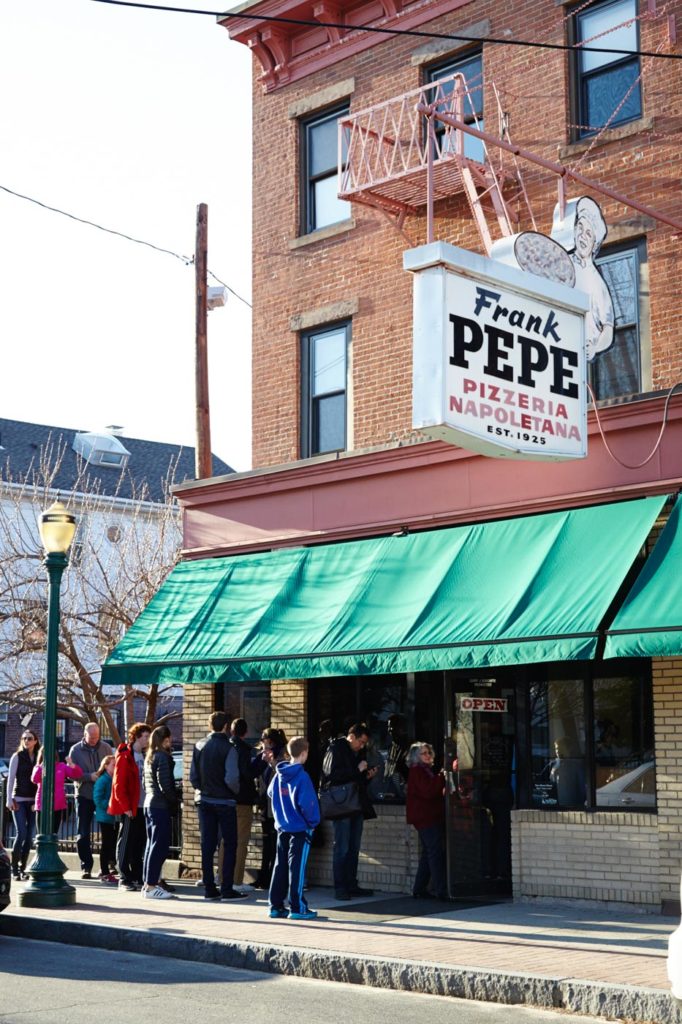
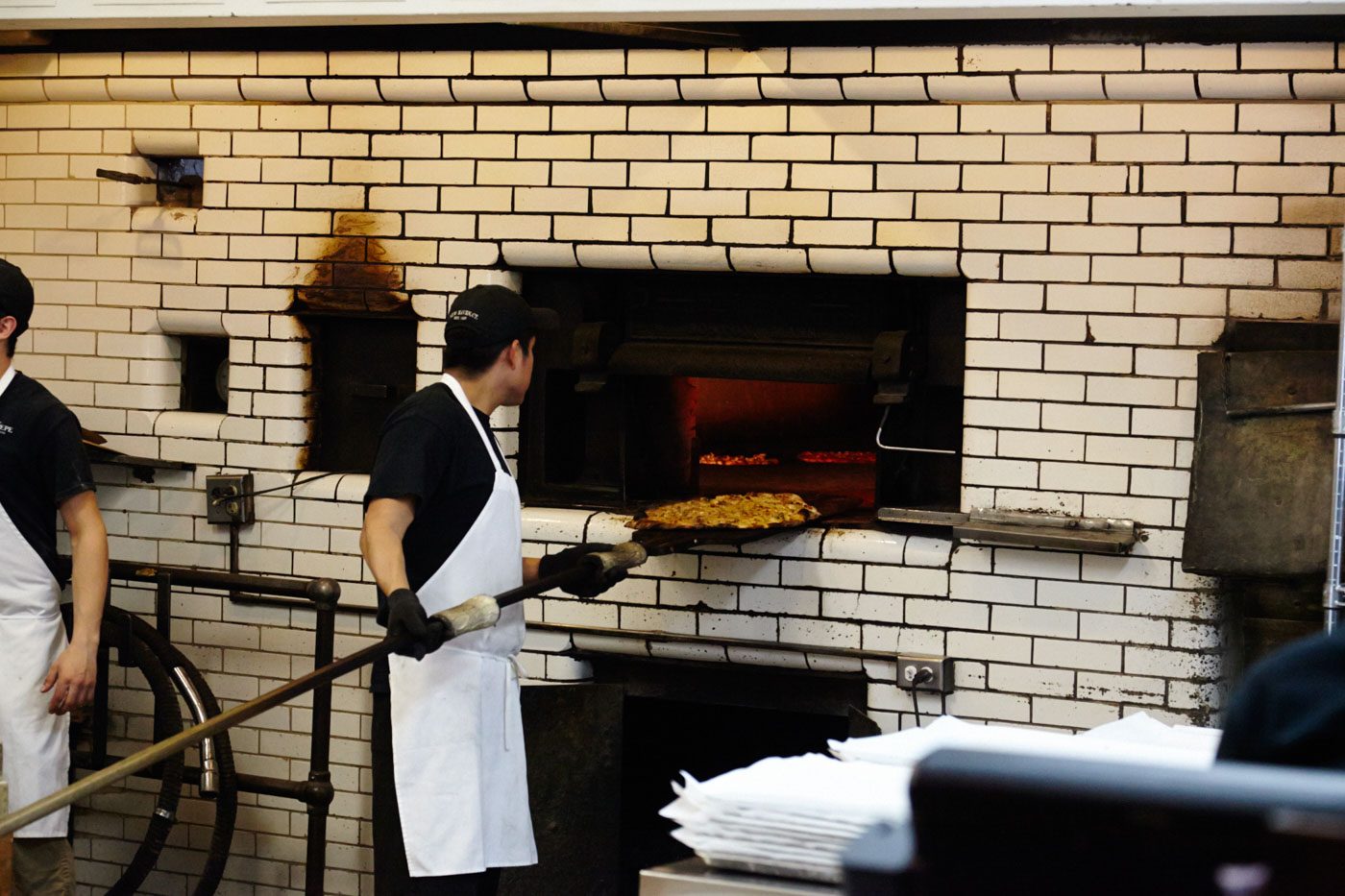
For those of us who grew up with New Haven pizza—who had no problem waiting in the hours-long lines in the sweltering summer months, or even in the brutal northeast Novembers and Decembers, when we were too frigid to think straight—these scenes weren’t a slice of life, they were a way of life. We accepted that lines are as constant as they are ubiquitous across establishments. It’s not unusual for it to take hours to finally take a seat at one of the pressed wood tables and vinyl booths. Don’t bother calling for reservations; they’re not an option. In fact, I wouldn’t bother calling at all—each restaurant is far too busy to take your call.
It’s a quirky ritual—one familiar to so many fellow Nutmeggers. But a glance at the walls inside these places proves their reputations reach beyond the surrounding towns; faux-gilded framed photos of famous visitors—presidents, stars of the stage and screen, even *NSYNC at the height of their boy band days, when JT wore a plush, golden coif. They all make a point to stop when they’re passing through. To stand in the lines like the rest of us, which, on any given night, snake down the block, beyond Consiglio’s restaurant and the apartment my college boyfriend once occupied, past the park, practically colliding with a line for yet another apizza parlor.
Once inside, access is granted not only to the menu and promised meal, but to the art of it all—the choreographed commotion of crafting this one specific thing. It’s a cascade of sensory cues; aromas of roasting tomato and smoke, the clatter of pans, the call of servers pulling fountain sodas and hollering over the din when orders are up. The rare, coal-fired ovens are practically museum-worthy pieces, nearly a century old in some cases, seasoned with the time and the crumbs and the crust of hundreds of thousands of pies—and fueled not only by the coal, but the grit and sweat of generations of the city’s immigrants, toiling relentlessly beside a cooking source that easily bests the 900-degree mark. The multigenerational pizzaiolos are fierce and focused, and to watch them dance around one another, expertly tossing and pulling dough—wooden pizza peels practically extensions of their own arms after years or decades of practice—is a mesmerizing spectacle for those sitting in wait.
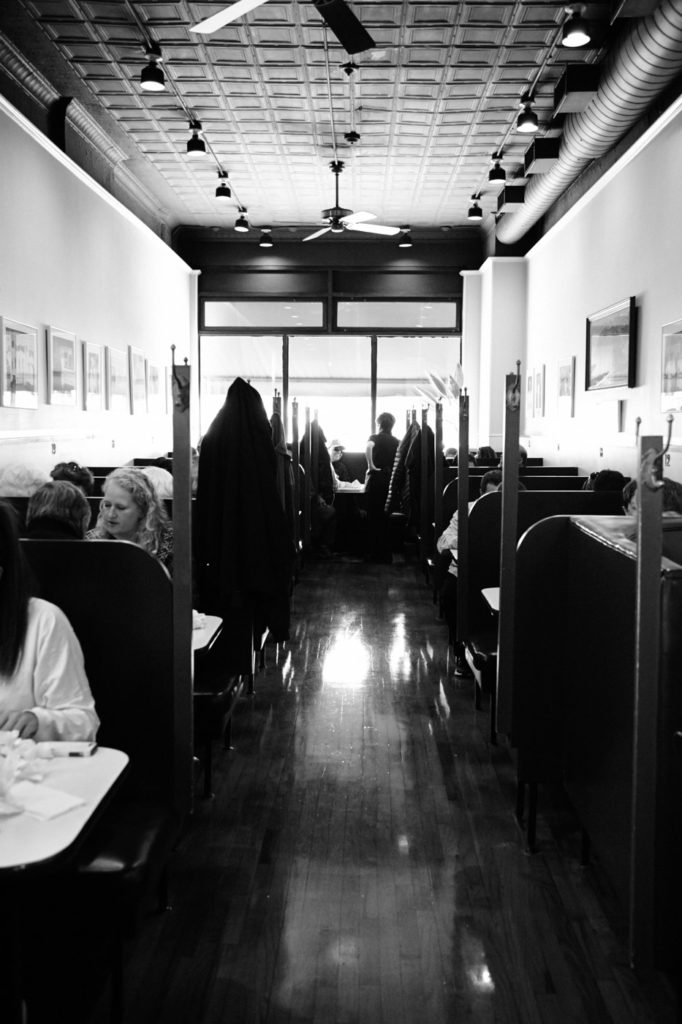

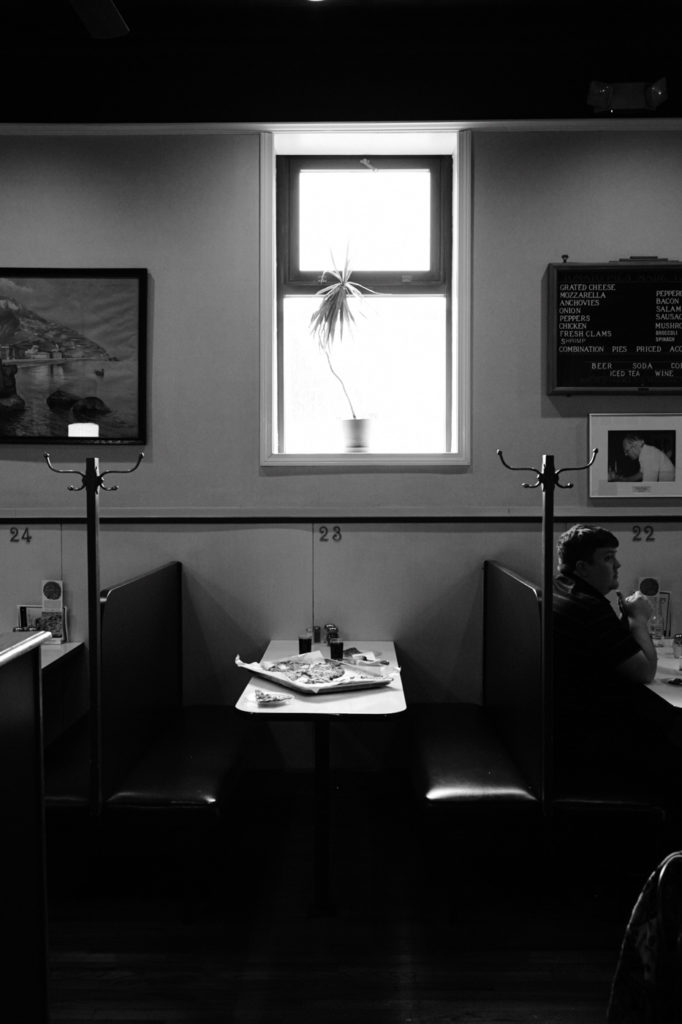

The experience varies slightly from place to place. Modern Apizza provides a laminated menu, while the offerings are listed on black, wall-mounted letterboard at Pepe’s (a place whose full and proper name, Frank Pepe Pizzeria Napoletana, is highly revered but rarely used). Wine selections can be served in more recognizable stemware, or in juice glasses just like my grandparents’ house. And, because this is not New York pizza, the standard, stringy, melted cheese is not always a given. The menu at Pepe’s explains their “tomato pies” are made to order (the “Original” comes simply dressed with grated cheese), and mozzarella is a option—just like pepperoni or sausage—not necessarily a rule.
More creative toppings and specialty pies are available scattered across the city’s best spots. The white clam is classic at Pepe’s, and for my mother, it’s the Veggie Bomb at Modern. Sally’s has a traditional white potato option, with garlic, rosemary, parmesan and onion; while Bar, one of the newer kids off the Wooster block, experiments with a more avant garde mashed potato pie.
When the big moment comes to those who have patiently waited, the pies in each place are loaded onto weathered, warped rectangular sheet trays and stacked on small tables, sometimes with your pie sharing support with that of the person next to you. And do not expect a perfect circle; these pizzas are practically art installations—like snowflakes, each a unique shape, no two pies are the same.
I’ve brought many people here to my pizza mecca, only to have them take one look at the misshapen pie with its charred, black edges and protest—that it’s burnt, or somehow less than perfect. I’m happy to tell them they’re plain crazy, but they come to that conclusion on their own upon first taste. New Haven apizza has a flavor all its own; thanks to those ancient, coal-fueled ovens, a certain smokiness finds itself at home in tandem with the slight tang of fresh tomato sauce, the fruity, fragrant olive oil and the deeply orange, blistered and bubbling cheeses. In fact, the soot is so pervasive that after handling that first slice, one can easily make a clear ashen fingerprint on parchment paper. In my opinion, walking out without blackened fingertips means you haven’t fully done your job as a diner.
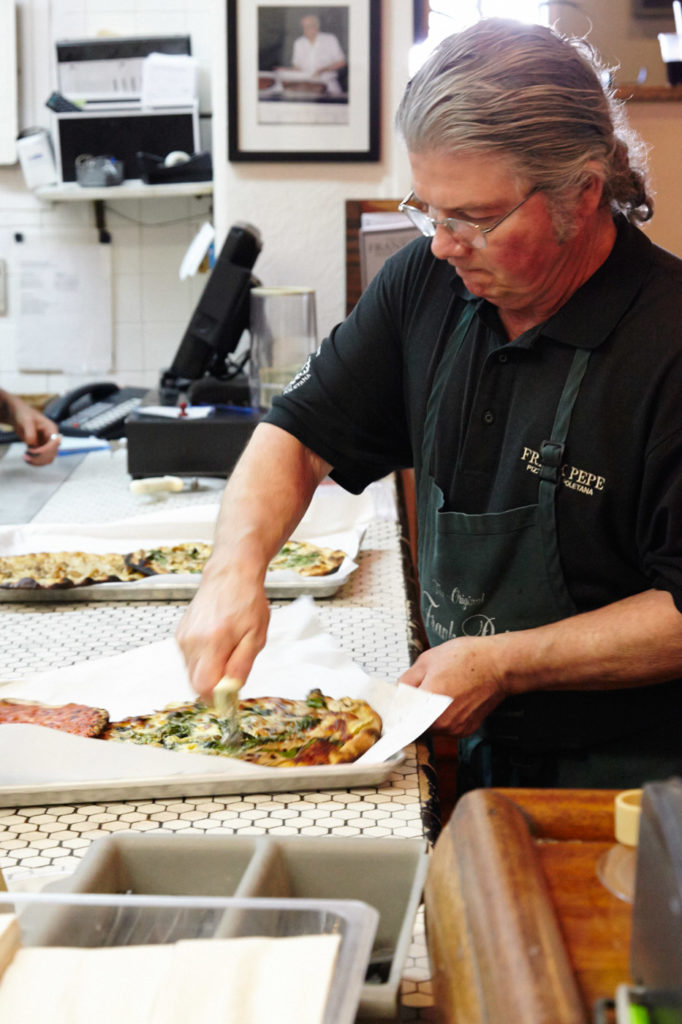

When all’s said and done and the apizza has been obliterated, it’s near blasphemous not to end the night on Wooster without a stop at Libby’s—an 85-year-old Italian bakery—for a palate-adjusting lemon ice, a crisp zeppole, or a flaky sfogliatelle, or to pick up a few pastries for the morning after. My grandfather prefers a sticky, saturated rum baba, my sister always the cannoli Siciliani. Personally, I’m after a brick of creamy, colorful post-pizza spumoni.
Wooster Street may not be Arthur Avenue. And the tomato pies can’t bring home the pennant—no matter how many awards I think they deserve. Nutmeggers might have to settle without sports teams or with splitting our population’s allegiances between bigger, more well-known states. But we have tradition, and most importantly, we have apizza—and that’s more than enough to make me proud.
——
Frank Pepe Pizzeria Napoletana
157 Wooster St, New Haven, CT 06511





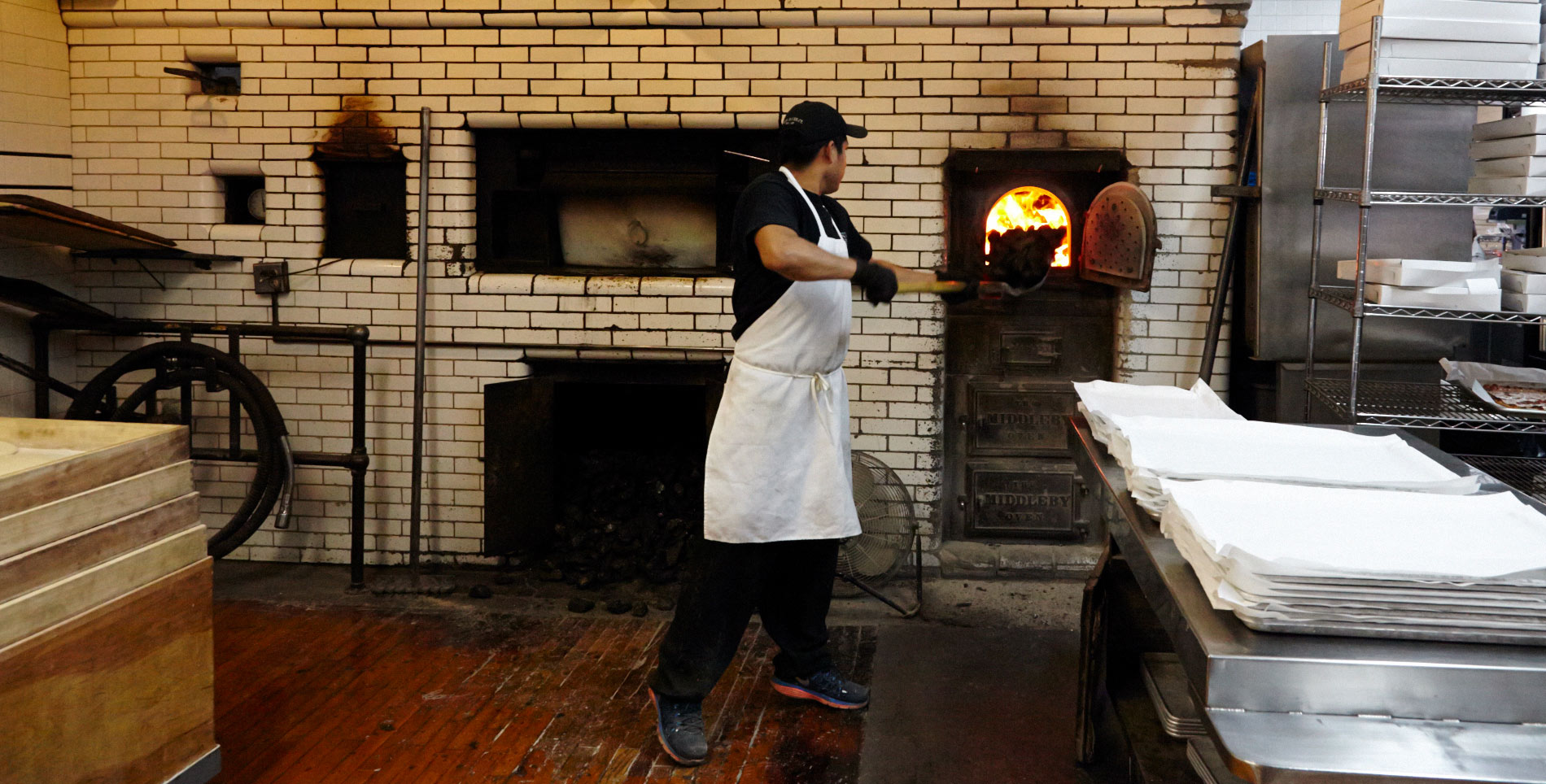

Our comments section is for members only.
Join today to gain exclusive access.